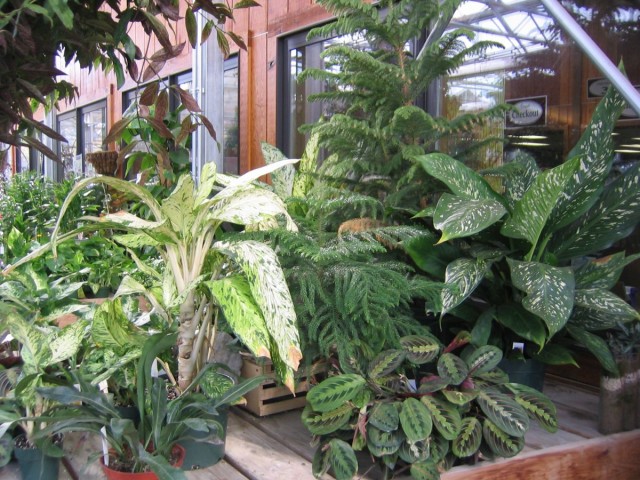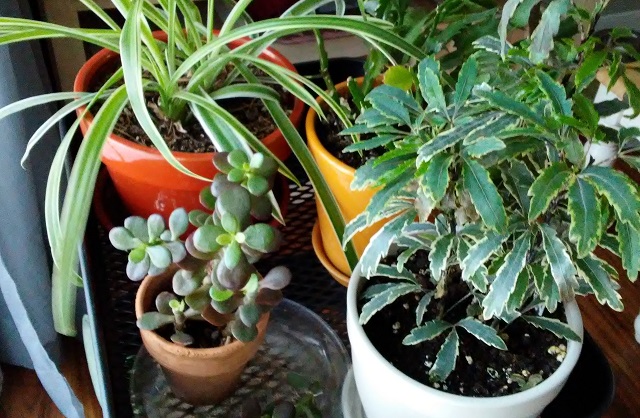Often times our indoor plants really struggle during the winter months, but you can help them make it through. Fewer hours of daylight combined with cloudy days don’t give our plants much light for growing which means they need less water and little or no fertilizer.
Light
In winter you may need to move plants to a west or south window to be sure they get sufficient light. The angle of sun decreases along with light intensity so a usually bright east window just might not cut it in winter. Avoid putting plants near drafty windows and keep them from touching cold glass which can cause damage to leaves and flowers. Despite your best efforts, plants may still get leggy during the winter months.
Water
Overwatering is very common in winter. All plants need water, but how much varies greatly so avoid a set watering schedule. Depending on your home and how it is heated plants may dry out more quickly. For best results, get an idea of how your pots feel when they are just watered or dry. Lift the pot each time to determine if it needs some water. For larger plants feel down a few inches to check for dryness or purchase a moisture meter to help you out.
Either way water thoroughly until water drains out the holes, allow to drain completely and empty any excess water from saucers. Too much watering can also lead to fungus gnats. To break the cycle, let the plants dry out between watering if you can which will disrupt their lifecycle. For more tips on dealing with fungus gnats, next check out my post from last year.
Humidity
Finally, lack of humidity can cause brown leaf tips and edges so make sure you water as needed. Try grouping plants and placing a tray of pebbles with water under the plants. The added moisture will increase humidity, but be sure the plants are not sitting in the water.
If you have problem houseplants, take a few pictures and stop in with your questions, we are happy to help!




